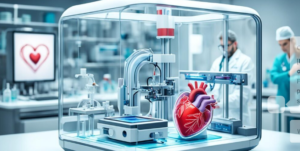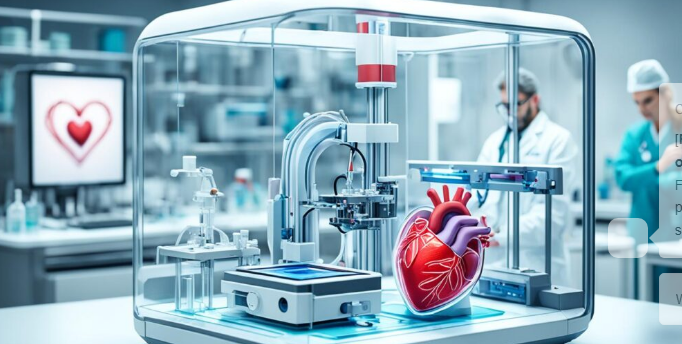Bioengineering Solutions for Organ Transplant Shortages: Pioneering a Future Without Waiting Lists
Organ transplantation has been a life-saving procedure for countless patients suffering from organ failure. However, the demand for donor organs far exceeds the supply, leaving many patients on waiting lists for years or dying before a suitable organ becomes available. This organ shortage crisis has driven researchers and bioengineers to develop innovative solutions aimed at closing the gap between supply and demand.
From 3D bioprinting and organ-on-a-chip technologies to regenerative medicine, this article explores the groundbreaking advancements in bioengineering that are transforming organ transplantation and offering hope to millions worldwide.
The Global Organ Shortage Crisis: Understanding the Problem
Organ shortages are a global issue, with thousands of patients waiting for transplants and only a fraction receiving them in time. According to the World Health Organization (WHO), organ demand has risen dramatically due to aging populations, lifestyle diseases, and improved diagnostic capabilities.
Key challenges in addressing this crisis include:
- Limited Donor Pool: The number of organ donors is significantly lower than the number of patients in need.
- Organ Rejection: Even when organs are available, the risk of immune rejection complicates transplantation.
- Ethical Concerns: Ethical dilemmas surrounding organ procurement, including illegal organ trade, hinder efforts to expand the donor pool.
- Geographical Disparities: Access to organ transplantation varies widely between regions, exacerbating inequalities in healthcare.
Bioengineering: A Game-Changer in Organ Transplantation
Bioengineering is revolutionizing the field of organ transplantation by offering innovative alternatives to traditional donor organs. These solutions aim to address the root causes of organ shortages while improving patient outcomes.
1. 3D Bioprinting of Organs
3D bioprinting is one of the most promising advancements in bioengineering. This technology uses bio-inks composed of living cells to print complex, functional organ structures layer by layer.
- How It Works: Cells from the patient are harvested, cultured, and combined with a biocompatible scaffold to create personalized organs.
- Advantages: Since the organs are made from the patient’s own cells, the risk of immune rejection is significantly reduced. Additionally, bioprinting allows for the creation of custom-sized organs tailored to individual needs.
2. Regenerative Medicine and Stem Cell Therapy
Regenerative medicine focuses on harnessing the body’s natural ability to heal and regenerate tissues. Stem cells, particularly pluripotent stem cells, play a crucial role in this field.
- Organ Regeneration: Scientists are exploring ways to regenerate damaged organs in vivo by stimulating stem cells to repair tissue.
- Lab-Grown Organs: Stem cells can also be differentiated into specific cell types and used to grow organs in the laboratory. For instance, researchers have successfully grown liver and kidney tissues from stem cells.
3. Xenotransplantation: Transplants from Animals
Xenotransplantation involves transplanting organs from animals into humans. Recent advances in genetic engineering have made this approach more viable.
- Genetic Modifications: Scientists are using CRISPR and other gene-editing tools to modify animal organs, making them more compatible with the human immune system.
- Notable Milestones: In 2022, a genetically modified pig heart was successfully transplanted into a human patient, marking a significant breakthrough in this field.
4. Organ-on-a-Chip Technology
While not a direct solution for transplantation, organ-on-a-chip devices provide a platform for testing drugs, studying diseases, and simulating organ functions.
- How It Helps: These microfluidic devices mimic the structure and function of human organs, enabling researchers to optimize bioengineered organs before transplantation.
5. Decellularization and Recellularization
This technique involves removing cells from donor organs, leaving behind a scaffold of extracellular matrix. The scaffold is then repopulated with the recipient’s cells.
- Applications: Decellularization has been used to create heart, lung, and liver scaffolds, offering a promising pathway for creating bioengineered organs.
- Advantages: This method reduces the risk of rejection while preserving the complex structure of the original organ.
Challenges in Bioengineered Organ Development
While bioengineering offers transformative potential, several challenges must be addressed to realize its full impact:
- Technical Complexity: Developing fully functional organs with intricate structures, such as blood vessels and nerves, remains a significant hurdle.
- Cost and Accessibility: High costs associated with bioengineering technologies limit their accessibility, especially in low-income regions.
- Regulatory Approval: Ensuring the safety and efficacy of bioengineered organs requires rigorous testing and regulatory oversight.
- Ethical Considerations: The use of animal organs, stem cells, and genetic engineering raises ethical questions that must be carefully navigated.
The Road Ahead: Innovations Shaping the Future
The future of organ transplantation lies in continued innovation, collaboration, and investment in bioengineering research. Key trends shaping the future include:
- AI and Machine Learning: Advanced algorithms are being used to optimize organ design, improve bioprinting precision, and predict transplantation outcomes.
- Hybrid Solutions: Combining multiple approaches, such as bioprinting and regenerative medicine, may lead to breakthroughs in creating fully functional organs.
- Global Collaboration: International partnerships are accelerating progress, with researchers pooling resources and expertise to tackle common challenges.
- Patient-Specific Models: Personalized medicine is becoming a cornerstone of bioengineering, ensuring that treatments are tailored to individual needs and conditions.
Conclusion: A Future Without Organ Shortages
Bioengineering is redefining the landscape of organ transplantation, offering hope for a future where organ shortages are a thing of the past. Through advancements in 3D bioprinting, regenerative medicine, xenotransplantation, and other cutting-edge technologies, researchers are paving the way for life-saving innovations that could transform healthcare.
While challenges remain, the progress made so far underscores the incredible potential of bioengineering to address one of medicine’s most pressing issues. As these technologies continue to evolve, they hold the promise of saving countless lives and revolutionizing the way we think about organ transplantation.

Also Read :
- Advances in Cybersecurity Engineering for IoT Devices
- High-Performance Computing in Chemical Engineering Simulations
- Bridging the Gap: Engineering Research in Affordable Housing
- Revolutionizing Agricultural Engineering with Robotics
- Exploring New Materials for Space Exploration: An Engineering Perspective
